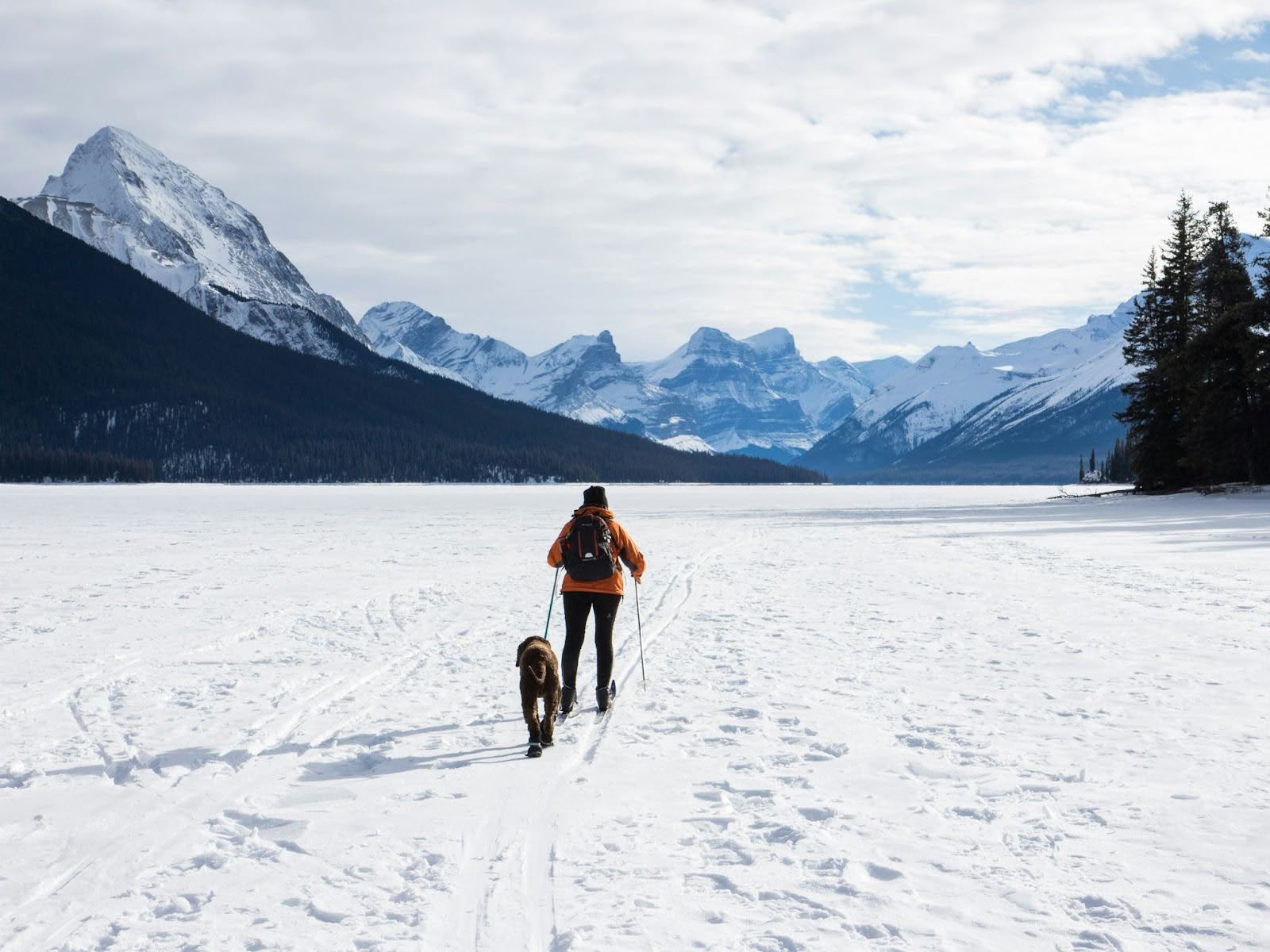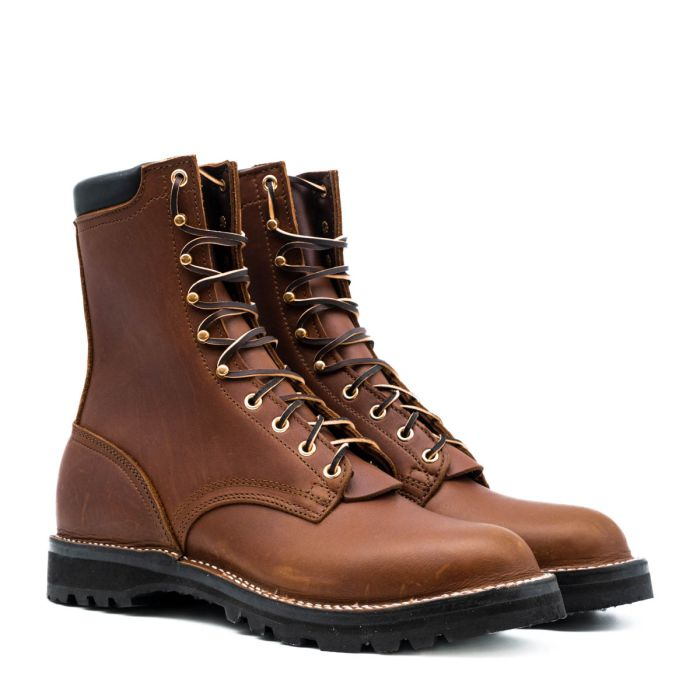Boots For Snow

Understanding Winter Footwear Essentials
Insulation And Warmth
Insulation is your first defense against winter's biting cold. Quality winter boots will feature high-grade insulation materials designed to trap and hold heat, keeping your feet warm even in extremely low temperatures. This is vital for those outdoors during winter, as it ensures your feet remain comfortable, preventing cold-related discomforts and potential frostbite.
Water Resistance
Water resistance in winter boots offers balanced protection against moisture, making them suitable for light to moderate wet conditions, like rain or snow. This feature, achieved through special materials and coatings, allows the boots to repel external water while staying breathable, effectively keeping feet dry and comfortable. Water-resistant boots are ideal for everyday urban use or light outdoor activities and help maintain a comfortable environment for your feet, preventing the discomfort and potential health issues caused by cold, damp conditions.
Traction And Safety
One of the biggest hazards in winter is the slippery, icy surfaces that can lead to falls and injuries. Proper winter boots will come equipped with rubber soles featuring deep treads or lugs designed explicitly for gripping onto icy and slippery surfaces. This enhanced traction is not just about safety; it also instills confidence as you navigate through challenging winter terrains, whether icy sidewalks or snow-covered trails.
Fit And Comfort
No matter how well a boot performs against the cold and wet, it won't be comfortable if it doesn't fit well. The best winter boots should offer a snug fit that comfortably accommodates thicker socks without being too tight.
Look for boots with supportive insoles and ergonomic designs to help combat fatigue, making them suitable for prolonged use. Proper fit and comfort ensure that you can stay focused on your winter activities or tasks without being distracted by discomfort.
Key Features To Look For In Snow Boots
- Insulation: Opt for high-quality boots to keep your feet warm.
- Waterproofing: Look for fully waterproof boots to dry your feet.
- Traction: Choose boots with rubber soles and deep lug patterns for good grip on icy surfaces.
- Breathability: Select boots with a breathable membrane to prevent sweat buildup and dry your feet.
- Lightweight Design: Prioritize lightweight materials for comfort without sacrificing protection.
- Durability: Seek boots with sturdy construction and reinforced seams for long-lasting wear.
- Closure System: Consider the closure system that offers a secure and snug fit for maximum comfort and effectiveness.


The Importance Of Waterproof Snow Boots
- Prevents Moisture Penetration: Waterproof boots keep your feet dry in wet conditions, ensuring comfort and protection.
- Enhances Insulation Efficiency: Waterproof boots help retain body heat by blocking out water, keeping your feet warm in cold weather.
- Promotes Foot Health: Dry feet prevent blisters and fungal infections, ensuring optimal foot health.
- Contributes To Overall Comfort: Waterproof boots eliminate the discomfort of wet feet, allowing you to enjoy winter activities without distractions.
- Supports Long-Term Durability: Waterproof boots are durable and can withstand harsh snow and ice, providing lasting value.
Snow Boots vs. Winter Boots
Regarding cold weather footwear, you'll come across terms like "snow boots" and "winter boots." While they may seem similar, they serve different purposes tailored to specific conditions.
Purpose And Design
- Snow Boots: These boots are made for snowy conditions, with high sides, waterproof materials, and grippy soles. They provide extra insulation to keep your feet warm in extreme cold.
- Winter Boots: Designed for cold weather, they may not be as focused on snow. They offer some waterproofing and insulation but prioritize warmth over dryness.
Waterproofing
- Snow Boots: Fully waterproof to protect your feet from deep snow and wet conditions.
- Winter Boots: While they may resist water, they're not always completely waterproof, which can lead to cold and wet feet in heavy snow.
Insulation
- Both boots keep your feet warm, but snow boots have heavier insulation suited for cold, snowy environments.
Usage
- Snow Boots: Perfect for heavy snow areas, outdoor winter activities, and maximum protection and warmth.
- Winter Boots: Better for city settings with cold but less snowy conditions or for versatile wear across different environments.
Understanding these distinctions helps you choose the right boot for your needs in colder weather, ensuring comfort and enjoyment throughout the winter.


The Role Of Traction In Snow Boots
Why Traction Is Essential
Poor traction in snowy and icy conditions can lead to dangerous falls, potentially resulting in injuries. High-quality traction in snow boots ensures that each step is secure, allowing you to walk confidently, even on treacherous terrain.
Types Of Traction Systems
Look for soles made from non-slip rubber with deep, multi-directional lugs or treads. These features are specifically designed to bite into slick surfaces and provide stability.
The Role Of Tread Design
Deeper lugs are excellent for loose, snowy conditions, as they penetrate the surface snow to find a grip on the more solid ground beneath. Wide-spaced treads allow snow to disperse from the soles easily. Certain tread patterns channel water away from the foot, increasing contact with the ground and reducing the risk of hydroplaning on wet ice.
Material Matters
Rubber is a commonly used material due to its flexibility and ability to grip well to various surfaces, including wet snow and ice. Advanced snow boots may utilize proprietary rubber compounds designed to remain supple and maintain grip even in extremely low temperatures, where traditional materials might harden and lose efficacy.
Balancing Act
A boot that offers excellent grip but lacks adequate insulation or waterproofing might not serve you well in cold, wet conditions. Similarly, a boot that's warm and waterproof but lacks traction can be hazardous on icy terrain. The best snow boots offer a harmonious balance of all essential features, ensuring not only your comfort but also your safety.
Choosing snow boots with superior traction is crucial in preparing for winter's challenges. As you compare different models and makes, consider the type of terrain you'll most often encounter and prioritize boots that offer advanced traction technologies. With the right snow boots, you can navigate even the most slippery winter landscapes securely and confidently.
Frequently Asked Questions
What are the best materials for snow boots?
The best materials for snow boots include waterproof synthetic materials, rubber, and leather treated for water resistance. The upper material must repel water and snow while providing warmth and breathability.
How do I choose the right size snow boots?
When choosing the right size snow boots, it's crucial to consider socks thickness. Generally, selecting a size slightly larger than your normal shoe size allows for thick winter socks. However, ensure the boots are not too loose to prevent cold air infiltration and maintain stability.
Can snow boots be used for hiking?
Thanks to their insulation and waterproof qualities, snow boots can be used for winter hiking on gentle terrains. However, if you plan on more challenging hikes, use winter hiking boots with better ankle support and traction.
How much insulation do I need in snow boots?
The insulation needed in snow boots depends on expected temperatures and activity levels. For mild weather, 200 grams of insulation might suffice. In contrast, in extremely cold conditions or if you're less active, look for boots with 400 grams of insulation or higher.
What is the difference between snow boots and winter boots?
Snow boots are specifically designed to handle deep snow and wet conditions, offering high levels of waterproofing and insulation. While warm, winter boots might not provide the same level of protection against deep snow and are more suited for cold weather rather than snowy conditions.
How can I make my snow boots last longer?
To make your snow boots last longer, clean them after each use to remove salt and dirt. Allow them to dry at room temperature away from direct heat. Apply waterproofing treatments as needed, and store them in a cool, dry place from direct sunlight.
Is it better to buy snow boots in a bigger size?
Buying snow boots a size bigger to accommodate thicker socks and ensure circulation is generally recommended, which is crucial for keeping your feet warm. However, boots that are too large might decrease stability and warmth due to air circulation.
How do I clean and care for my snow boots?
Clean your snow boots using mild soap and cold water. Avoid soaking and drying them at room temperature, away from direct heat sources. Apply a water-repellent spray periodically, and condition leather boots to prevent drying and cracking.
Can snow boots be repaired if they get damaged?
Snow boots can often be repaired, especially if the soles or seams are damaged. The best option is to take them to a professional cobbler specializing in outdoor footwear for assessment and repair.





Validate your login